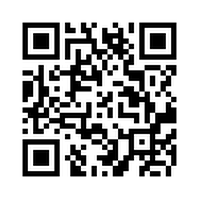 "Lifeless Face #045" by nottsexminer Do you see a face? Look again at the picture on the left. Look very closely. Now do you see a face? Recently, while perusing the gift shop in my local art museum, I discovered a create collection of photography in a book called Found Faces. Immediately, I thought "This is the result of very careful noticings and creativity! This is what I want my students to do!" Of course, the book came with a $15 price tag, which I did not have in my budget that day, so I was more than a little disappointed that I'd have to go home empty handed. My next thought (which quickly followed by my initial excitement and the subsequent sadness due to lack of funds) was to purchase the book used on Amazon. (The current price starts at only $4.86 as I'm posting this.) I was really happy to find out it was cheaper online, but my happiness did not stop there... A quick Google search revealed that there is an entire collection of these "found faces" on Flickr containing literally thousands of images similar to the photo above. Now, before you go copying photos and pasting them into Power Point presentations--or photocopying them by the thousands--do be aware that each photo in the collection has its own license terms; some have "all rights reserved," while others have only ask that you give credit to the photographer or that you do not use the photo for commercial purposes. Before you "borrow" a photograph, be familiar with its license terms and know what those terms mean. So, how can "found faces" be used in the classroom? First, I love the idea that these photos are great examples of finding the extraordinary in ordinary places, and of really approaching the everyday with a careful, watchful eye. How many times a day do we walk past a hidden face without ever seeing it? It would be a great exercise in observation to have students locate their own found faces in their schools, homes, or communities. Additionally, I see huge potential in terms of narrative writing and descriptive writing in response to these faces. I think students would enjoy viewing some of these faces and writing their background stories. This would also be a great anchor activity, or a springboard for even richer narrative and descriptive writing experiences.
0 Comments
 You've probably seen this strange little code boxes cropping up in advertisements and online. They're QR codes (Quick Response codes) and apparently they've been around for a long time, but have only recently become popular in the United States. Essentially, with the help of free software programs, Smart phones can scan the codes and get links to related videos, images or websites. For example, if you have QR software downloaded on your phone (I use QR Reader for iPhone) and you hold your phone up to the code to the left, your phone will be directed to meandmylaptop.weebly.com This is great for advertisers who want to link consumers to advertisements; however, it can also be useful in education. One way that QR codes is currently being used is to create scannable answer keys and scavenger hunts. My own goal this year is to have my seniors do some writing in response to places in the community. Once the writing is finished, I would like to post QR codes in these locations that links people to the student writing (which will be hosted on a web site). Imagine going into the local store and finding a QR code that links you to a short story, poem or narrative essay inspired by that store. I'll be sure to post an update on this idea after I've completed the project in December. Until then, be sure to watch the video embedded below. It does a phenomenal job of explaining what QR codes are, how they are currently being used, and how you can generate your own QR codes. More information about QR codes: http://www.iste.org/connect/iste-connects/blog-detail/11-01-12/Using_QR_Codes_in_Education.aspx http://michaelbromby.wordpress.com/2011/06/01/qr-codes-in-education/ http://www.freetech4teachers.com/2011/07/qr-code-treasure-hunt-generator.html http://museforjews.com/2011/07/23/qr-codes-in-education-whats-the-point/ UPDATE 8-8-11 Tom Barrett has added Interesting Ways To Use QR Codes to his website. View the slideshow HERE. |
AuthorDr. Jessica Pilgreen, Ed.D. Archives
December 2020
Categories
All
|

